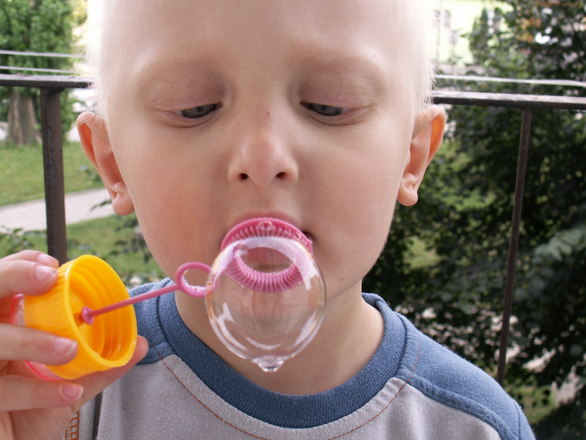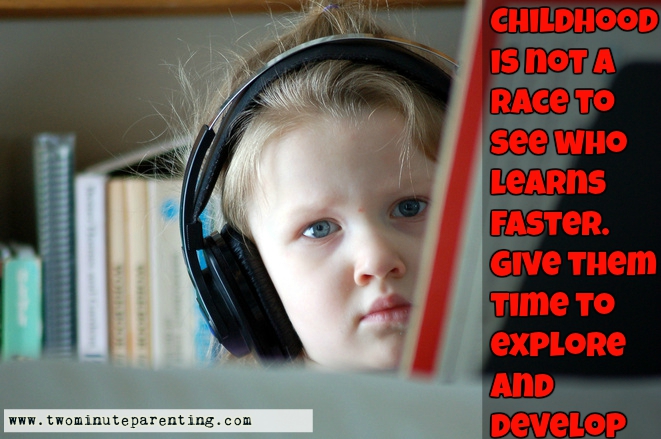Communication and speech remain one of the most delayed milestone for children with Down Syndrome. The desire to communicate and being understood by others is inherent in all humans but sometimes when the articulation is not clear (as in the case of our children with an extra chromosome), it becomes difficult for the listener to understand. This failure to make the other person understand can cause additional frustration in our children and it can then become a vicious circle in which our children get trapped and feel unconfident while communicating.
Another reason our children do not engage in conversations long enough to understand communication fully is that a lot of times they don’t have people except for the overburdened parents to communicate. The parents too by now become so acquainted to the non-verbal, monosyllable, bi-syllables or a few words answers that they don’t really indulge in a good back and forth interaction. Also, the lack of meaningful friendships or social groups is partly responsible for lack of speech development in our children with Down syndrome.
Speech isn’t an easy skill to acquire. It requires the rhythmic coördination of brain, muscles, lips, tongue, vocal cords and lungs. Dr. Nina Piyush, a paediatrician, mentions in her blog the following reasons for difficulties in developing speech:
- Limited vocabulary
- Low muscle tone
- High arched palate
- Macroglossia
There are very simple exercises that you can engage in with your children to improve their articulation. Dr. Nina runs a school with over 200 children with special needs so her suggestions and recommendations are 200 times tested and proved. Here we go…

Children enjoy learning through fun and activities and working at speech should not be made an exception. If the activities are interesting and fun, children can be kept busy for hours. Dr. Nina Piyush mentions some innovative ideas which can make the games for our children more challenging and interesting.
1. Blowing
-
Bubble blowing in a bottle
Take a 200ml plastic bottle and create a 1 cm hole at the bottom. Remove the bottle’s cap and dip it in a bowl full of soap water. Now blow from the hole you had made at the bottom. Since the air needs to travel a long way, the force needed to make bubbles is stronger than the average bubble toy. You can increase the level of difficulty by increasing the size of the bottle
-
Blowing thermocol balls
Take a large bottle, about 1-2 L. Cut the portion at the bottom. Make a hole of 1 cm diametrically on the cap and put the cap on. Now turn the bottle upside down and place some tennis balls and thermocol balls on top of it. Put a thick straw through the hole in the cap and blow through it. Try to throw the balls out of the bottle.
-
Blowing a balloon
Whether there’s a party or not, children love to play with balloons. Give them a fixed no of balloons to blow each day. Use good quality balloons that require good strength to blow them. At the end of the day, you will never be short of decorations for a party.

-
Blowing candles
The joy of blowing a candle need not be kept only for birthdays. It can be used as an exercise but remember to perform it only under adult supervision. Increase the distance to make it more challenging.
2. Playing a flute or a trumpet
Children can be given any wind instrument like whistle for playing. Playing wind instrument help in oro-motor exercises and help strengthen the muscles needed to produce the speech. If the child is interested in music they can be taught and this could lead to a better speech as well as a new hobby!
3. Oral sensitising vibrators
Vibrators can help sensitise the gums, oral cavity and cheek muscles.
4. Chewers and Teethers
These are easily available in the market and are used for infants by everybody. Ensure that they are of good quality since they are going to be in the mouth for long hours. Clean them regularly to avoid infection from germs. Chewers are very useful to increase the tone of cheek muscles.
5. Licking food
Licking food is a good exercise for the tongue. Try putting some honey, peanut butter, ketchup, butter, nutella, etc on and around the lips of your children and encourage them to lick it. You can also give hem good quality lollipops. This will involve both licking and sucking exercises.
6. Sucking
Drinking liquids of various densities by using a straw is a good exercise for the cheek muscles. One can increase the level of difficulty by making the liquid denser and the straw narrower.
Apart from these there are certain other exercises which involves voluntary movement of the lips and tongue.
- Children can be asked to pout or kiss on a hard surface like a mirror. They can be encouraged by putting a picture of their choice on the mirror which they can then kiss.
- Children can be made to move their tongue in all directions. You can apply honey or any other sticky food of their choice outside of lips and inside of the cheeks and roof of the mouth and ask them to lick it all.
- Parents can also encourage them to blow air in their mouth and hold it for a minute or two
7. Mirror technique
Sit with your child on your lap in front of a mirror. You need to look at the mirror and pronounce each letter of the alphabet slowly and clearly. Open your mouth broadly to show the movement in pronouncing the word. Do not look at your child. Your child will slowly start imitating you. Parents can also record their own video saying these words and show it to their child to make these activities interesting.
8. Singing
Songs and poems help speech acquisition faster. Sing along simple songs or play them in the background. Slowly children learn to catch on to the words. Getting them a mike where they can enjoy as well as can record their voices to hear it later is also a good idea to motivate them.
9. Reading Aloud
Read short, simple stories to your children. A lot of words get added to their vocabulary by listening to a story. We are all aware that our children’s receptive skills are better evolved than their expressive skills, which is why, reading should never be taken for granted. A lot of times, children with Down syndrome, are understanding and keeping the words read in their vocabulary bank to use it later when they can.
These are a few techniques that can help improve the speech of your precious child with special needs. If you have more such techniques, please feel free to mention in the comment section below…
Love
Aarshia and Mama







I am a parent of a Downs Syndrome Kid of 3 Years of age. Can u please send me videos regarding the upbringing of such kids. If you have any PDF books please suggest them as well.
Thank u
Mir, There are many resources available online and otherwise. There are many articles on my website and otherwise about the early intervention activities which should be your priority now. As of now I don’t have a pdf book but will soon have. take care
Wonderful article. Thanks for sharing Deepa
Regards
Swaminathan
(father of a 14 year old high functioning kid with autism)
Thanks for liking sir 🙂